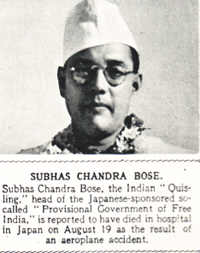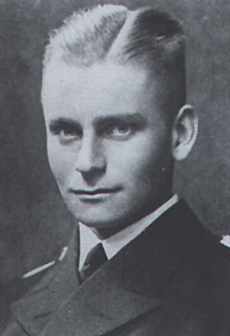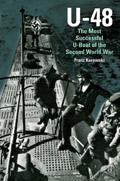The Monsun boats
2. Pre-Monsun Boats
2.1 First reconnaissance
In April 1942 U-68 and U-505 brought some intelligence about Capetown-Freetown ship traffic. This drew to the conclusion of sending several type IXC boats supported by a U-tanker to the Capetown area.
Formerly this area was exclusively allocated for surface raiders and blockade-runners. On the 25/07/42 however it was decided to send U-boats to the Capetown area. Conditions similar to the original attack on the US coastal shipping were expected. However, the Japanese action off Madagascar already gave a warning.
2.2 Eisbär group - the first wave of type IXC boats
In August 1942 group of the following boats sailed to the Capetown area:
| boat | commander | sailed | returned |
|---|---|---|---|
| U-172 | Kptlt. Carl Emmermann | France 19/08/42 | France 27/12/42 |
| U-504 | Krvkpt. Fritz Poske | France 19/08/42 | France 11/12/42 |
| U-156 | Krvkpt. Werner Hartenstein | France 20/08/42 | France 16/11/42 |
| U-68 | Krvkpt. Karl-Friedrich Merten | France 20/08/42 | France 6/12/42 |
The group was accompanied by the Milk Cow U-459.
While on the way south U-156 of the Eisbär group torpedoed the British liner Laconia on 12/09/42 with the well-known consequences. In course of the Laconia incident U-156 was replaced by U-159 (originally intended for the Congo Delta) which headed south together with the remaining Eisbär boats:
| boat | commander | sailed | returned |
|---|---|---|---|
| U-159 | Kptlt. Helmut Witte | France 24/08/42 | France 5/01/43 |
While moving south Eisbär boats sighted a few independent ships but were not allowed to attack them.
Eisbär boats refuelled from U-459 600 miles south of St Helena around 23/09/42.
On 8/10/42 Eisbär boats arrived at Capetown but found the anchorage empty. The Allied took some precautions after the Japanese action off Madagascar. However, the boats found targets in the area.
In mid October U-172 and U-68 started their home journey not expending all the torpedoes due to bad weather conditions and resulting fuel shortages. U-159 and U-504 carried on around Durban with some success. Eisbär boats were gradually replaced by the arriving U-cruisers.
U-172 and U-159 were refuelled by the Milk Cow U-461 around 7/12/42 when returning from the Cape via the Brazilian coast. U-172 later intercepted a convoy there and scored hits on 12/12/42.
2.3 The arrival of U-cruisers
In the meantime the first wave of U-Cruisers (type IXD/2 long-distance boats) was despatched to the Capetown area:
| boat | commander | sailed | returned |
|---|---|---|---|
| U-179 | Frgkpt. Ernst Sobe | Germany 15/08/42 | sunk 8/10/42 |
| U-178 | KptzS Hans Ibbeken | Germany 8/09/42 | France 9/01/43 |
| U-181 | Kptlt. Wolfgang Lüth | Germany 12/09/42 | France 18/01/43 |
| U-177 | Kptlt. Robert Gysae | Germany 17/09/42 | France 22/01/43 |
U-cruisers' immense radius of action meant no refuelling was necessary even when operating as far as Capetown and Durban area. All the boats were on their first war cruises after commissioning but they were commanded by experienced skippers.
U-179 arrived in the area on 8/10/42, as Eisbär boats, but was promptly sunk after torpedoing just one ship. This was the only U-boat sunk in the area till summer 1943. The others arrived in the second half of October so the return of the Eisbär group did not ease the pressure on shipping.
After the return of the Eisbär boats only U-177, U-178 and U-181 were in the area. They operated as far as Laurenco Marques but by the end of 1942 all were on the way home.
In early January 1943 while returning home U-181 was included in the group operating against the tanker convoy TM-1 but did not score hits. U-182 on her way to the Cape area was also involved in this operation. Further operations with U-cruisers were delayed till April 1943 because of problems with their fast-running diesel engines (with the exception of U-182).
2.4 Seehund group - second wave of type IXC boats
Experience with Eisbär group had shown that type IXC boats, even when supported by a U-tanker, could not operate around the Cape for time long enough to expend all the torpedoes. However, as no U-cruisers were available at the time, it was decided to send another wave of type IXC boats to put constant pressure on traffic there:
| boat | commander | sailed | returned |
|---|---|---|---|
| U-506 | Kptlt. Erich Würdemann | France 14/12/42 | France 8/05/43 |
| U-509 | Kptlt. Werner Witte | France 23/12/42 | France 11/05/43 |
| U-516 | Krvkpt. Gerhard Wiebe | France 23/12/42 | France 3/05/43 |
| U-160 | Kptlt. Georg Lassen | France 6/01/43 | France 10/05/43 |
The group was once again supported by the tanker U-459. The group was joined by U-182, the only type IXD/2 U-cruiser available at that time:
| boat | commander | sailed | returned |
|---|---|---|---|
| U-182 | Kptlt. Nicolai Clausen | Norway 9/12/42 | sunk 16/05/43 |
The Seehund boats refuelled 600 miles south of St. Helena between 29 Jan and 4 Feb, 1943. Together with U-182 they started operating around the Cape from mid February 1943. All the boats eventually scored hits but the situation had completely changed since December 1942. The single ship traffic ceased and instead convoys protected by surface and air escort were encountered. The traffic was directed close to the coast so land radar stations were also employed against the approaching U-boats.
By the end of February 1943 the group was moved eastwards to Durban and Laurenco Marques. There on 3 March, 1943 U-160 attacked the first convoy located south of Durban with great success. However, other Seehund boats were less successful and were moved backward to the Cape area because of fuel shortage. By the beginning of April 1943 Seehund group activity (as well as U-182) ended and the boats headed home. They were refuelled from U-117 between 23 and 29 April, 1943.
The Seehund group experience was generally unsatisfactory. Additionally, U-182 was sunk with all hands (61) on the way home on 16 May, 1943.
2.5 The second wave of U-cruisers
Before the unsatisfactory results of Seehund boats were known, another group of U<-cruisers was sent to the Cape area:
| boat | commander | sailed | returned |
|---|---|---|---|
| U-180 | Frgkpt. Werner Musenberg | Germany 9/02/43 | France 2/07/43 |
| U-198 | Frgkpt. Werner Hartmann | Germany 9/03/43 | France 25/09/43 |
| U-196 | Krvkpt. Eitel-Friedrich Kentrat | Germany 13/03/43 | France 28/10/43 |
| U-195 | Kptlt. Heinz Buchholz | Germany 20/03/43 | France 23/07/43 |
| U-181 | Krvkpt. Wolfgang Lüth | France 23/03/43 | France 14/10/43 |
| U-178 | Krvkpt. Wilhelm Dommes | France 28/03/43 | Penang 26/08/43 |
| U-177 | Krvkpt. Robert Gysae | France 1/04/43 | France 1/10/43 |
| U-197 | Krvkpt. Robert Bartels | Germany 3/04/43 | sunk 20/08/43 |
U-180 and U-195 were of type IXD/1 and the rest of IXD/2. As these boats carried large quantities of fuel it was decided to send them as far as Madagascar and probe the traffic there instead of the empty Cape area.
 U-180 was on the first east-bound U-boat transport expedition. She carried 2 passengers (2 Indian nationalists, including Subhas Chandras Bose pictured on the left), plans and samples of new developments (including Bold). On 26-27 April, 1943 randez vouz 180 miles south-east of Madagascar and transshipment with I-2 9 took place.
U-180 was on the first east-bound U-boat transport expedition. She carried 2 passengers (2 Indian nationalists, including Subhas Chandras Bose pictured on the left), plans and samples of new developments (including Bold). On 26-27 April, 1943 randez vouz 180 miles south-east of Madagascar and transshipment with I-2 9 took place.
The remaining boats arrived to the area in May 1943 (with the exception of U-197 which was late and arrived in June 1943). They took pre-arranged routes to survey the traffic 600 to 700 miles off the African coast. U-177 carried out experiments with Bachstelze - a small helicopter with an observer towed by the U-boat. 30 flights were made but not a single ship was sighted. Miserable results were achieved when patrolling off south-east Africa in May 1943.
U-195 soon returned home while the remaining 6 U-cruisers carried on operations and moved eastwards to a position 600 miles south of Mauritius. Here the group was refuelled and reprovissioned on 23 June, 1943 from the surface tanker Charlotte Schliemann sent from Japan. Special security measures were undertaken.
After replenishing the boats took the following positions:
| U-178 and U-196 | the Mozambique Channel |
| U-181 | off Mauritius |
| U-197 and U-198 | south of the Mozambique Channel |
| U-177 | south of Madagascar |
U-177 once again tried Bachstelze because of little air activity in the region. The Greek ship Eithalia Mari was spotted and subsequently sunk this way on 5 Aug, 1943 (the only sinking resulting from a Bachstelze observation).
Surprisingly good results were achieved after the area relocation and a number of ships were sunk, mainly off Madagascar. In mid August 1943 the last U-cruiser started the return passage. On 20 Aug, 1943 U-197 was damaged by an aircraft and sunk before U-196 and U-181 arrived to the spot to give assistance. There were no survivors (the first casualty in the Cape area since 8 Oct, 1942).
Unlike the rest of the group, U-178 was sent to Penang where she arrived in late August 1943. Dommes became the commander at the German naval base at Penang with the satellite facilities at Singapore, Djakarta, Surabaja and Kobe. The base was to serve for the coming Monsun boats and Dommes was to acquire some experience of the base. The decision of sending U-178 to Penang was made on 5 April, 1943, after she sailed from France.
Although all the boats scored hits, the overall result of this group was moderate, taking into account the time and resources involved.
With exception of U-178 all the boats listed in the section Pre-Monsun boats were intended to return and not to be stationed in the Indian Ocean. U-178 eventually arrived at Penang but initially she was also to come back to Europe. Pre-Monsun boats did not penetrate into the Indian Ocean too much.



